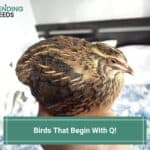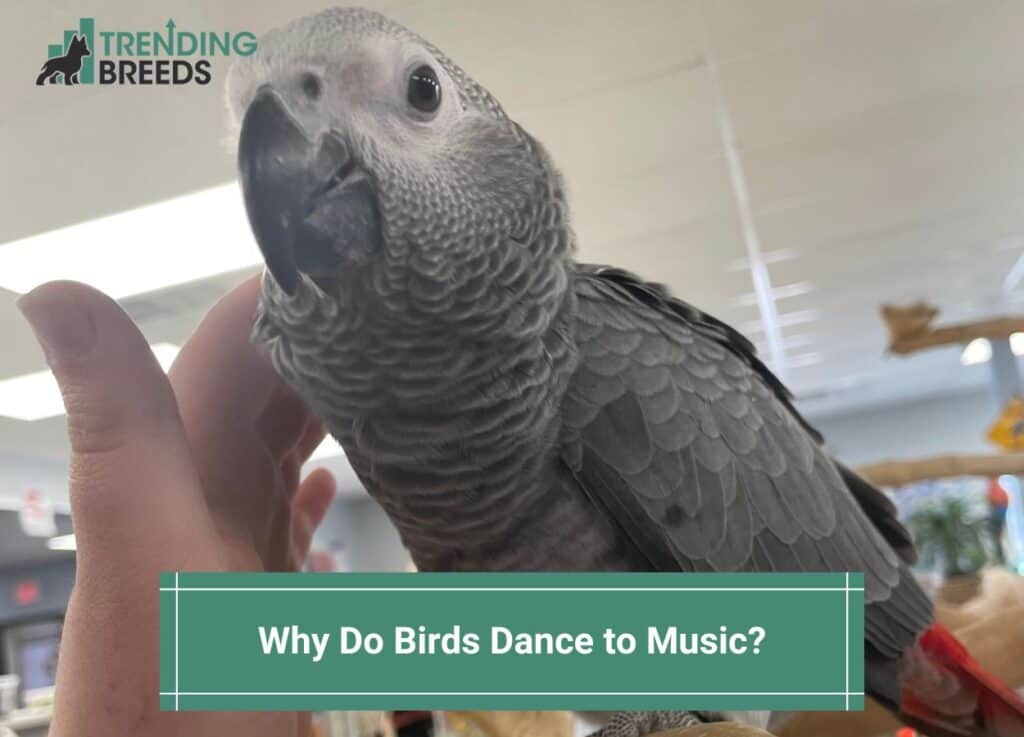
You must have seen those adorable and hilarious videos of birds breaking a beat to different songs and music. Many wonder why those birds are dancing and how they can do so. So, why do birds dance to music?
A bird may be dancing to music because it may have been trained to do so by its owner. It’s also quite possible that the bird mimics other people’s dancing. Lastly, the bird may like the beat.
Keep reading below for more information.
Before you scroll further down this guide, check out these other bird-related articles: Why Do Birds Kiss? and Best Bird Rescues in Australia.
Table of Contents
Can Birds Actually Dance?

Dr. Schachner, who works at the Massachusetts Institute of Technology, started questioning the phenomenon of birds dancing.
She and the other study team members created a new piece of music, which they then played for the well-known African grey parrot Alex.
It’s worth noting that Alex mastered complex procedures during a 30-year research project. Language and comprehension were the focus of the exercises.
The result of the study was that Alex, like most parrots, had a very high IQ, and he followed the beat of the new song with human-like precision.
Because of this, the team concluded that his dancing could not have been the consequence of previous training or having listened to the songs previously and that he was indeed dancing.
Is Mimicry Responsible for Bird Dances?
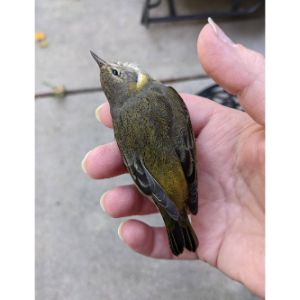
Imagine that you are entertaining some guests at your place while listening to music on your phone and that, during the evening, your all-time favorite song starts playing.
If you like the song, you might feel the urge to get up and move around to the beat. But suddenly, your parrot joins in and starts dancing with you and the rest of your buddies to the music as if it were no big deal.
To some, this may seem endearing: “Aw, how adorable he keeps going along with us!” It causes you to believe that parrots could be doing any of the following:
- Replicating your every motion
- Observing live or recorded performances on a computer or television
- Imitating the actions of others
But the real reason your parrot has joined the party is considerably more interesting. Dr. Patel and the rest of his study team entertained the famous parrot Snowball by playing some of his favorite songs at various tempos.
He instructed the people working with him not to react to the music in any manner, especially by making involuntary rhythmic motions (such as head bobbing or toe tapping), dancing, or singing along with the melodies.
The famed cockatoo wasn’t always perfectly in time with the music, but his tempo shifted to match the beat.
Dr. Patel and his team concluded, as a result of this, that Snowball was capable of independently recognizing the beat.
He was born with the intrinsic talent to dance, and all he needed to do so was take signals from his immediate surroundings; he didn’t require any assistance from the other people in the room.
Do Birds Enjoy Music?

Because humans possess a brain capable of thought, we can engage in activities beyond ensuring our lives.
Parrots, like humans, possess highly developed cognitive capabilities that allow them to gain a broader understanding of the environment than would be possible through only instinctual means. Parrots become so excited when they hear music and start dancing.
The group led by Dr. Schachner noticed that the parrot they were using in the experiment did not react immediately when it heard music.
Instead, they were only seen dancing if they felt like it. Parrots clearly express their enjoyment of music through movement.
Role of Training
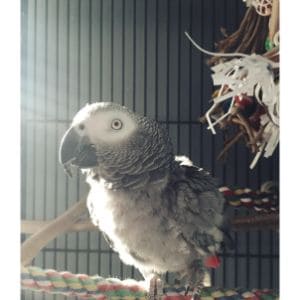
It is not quite clear to Dr. Patel and the other research team members whether or not Snowball is capable of dancing due to having received earlier training in this activity.
There is a great deal that needs to be studied about Snowball or any other parrot that is capable of dancing, including the following:
- Was he taught to dance by his former owners?
- What kind of dancing did the former owner do, if any?
- Why does the parrot start dancing when certain songs are played?
Due to the lack of information concerning Snowball’s early life, some have speculated that his prior owners may have trained him to dance.
The owner claims that he and his children began moving their arms and dancing when they saw the parrot bobbing its head to the music. The routine now includes Snowball bouncing his feet up and down.
Tips to Train Your Bird to Dance

It’s possible that with a little training, you can speed up your parrot’s progress toward dancing.
Tip# 1
Play a song with a strong beat when you and your pet play together. Face each other. When you’re first getting started, country and soft rock are some of the better genres to explore.
Tip# 2

Engage the other by making eye contact and nodding in time with the song’s beat.
Tip# 3
Keep clapping and bobbing your head to the music for at least a few songs while your pet performs.
Tip# 4
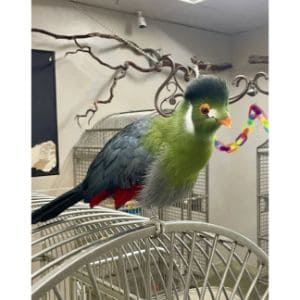
You can start teaching your parrot basic movements, such as swinging your arms and raising your legs when it first starts to show signs of understanding what you are trying to teach it.
Tip# 5
You are free to play music in the background while you work or clean, but to prevent your pet from feeling anxious, we suggest that you limit the training sessions to a maximum of one song at a time.
Before making another attempt, ensure that your bird has had at least a few hours to relax.
Tip# 6

Always have a cheerful attitude and exercise patience. You may have to carry out this process multiple times before your bird starts dancing.
Tip# 7
When your pet has figured out what’s going on, it’s in its best interest for you to let it listen to a wide variety of music so you can figure out which songs are its favorites.
If you play music your bird enjoys, it’s more likely to get up and show off its dancing skills.
Tip# 8

Healthy birds are more likely to dance. Invest in some durable, brightly colored toys for your bird.
How to Teach Your Bird Different Moves
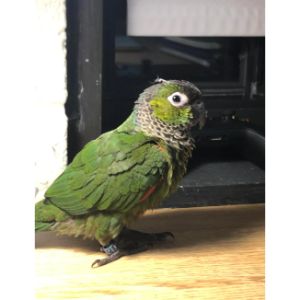
Here are some different moves you can teach your bird, along with the instructions.
The Wing Move
Although you may not have wings, you can still train your bird to flap its wings. Do the following to complete this training:
- Perform the chicken dance by tucking your hands into your underarms like you would normally.
- Slowly bring your “wings” parallel to your torso, then issue a command such as “Do the wing move!”
Be positive and supportive always; if your parrot does a good job, reward them.
And naturally, you shouldn’t forget to show your pet bird some affection by petting him or her on the head and offering words of encouragement and praise whenever they or attempt or even finish the exercise.
The Dip
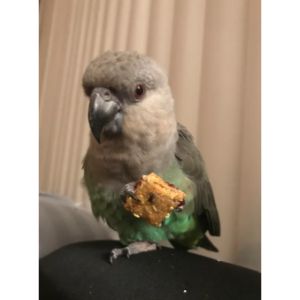
The dip is performed by lowering and then raising the parrot’s head. It resembles the head bobbing of all birds, particularly budgerigars. Here’s how to teach your parrot this sweet trick:
- Tuck your arms under your body and strike a “wing thing” stance.
- Join them in the dip.
- Be sure to use a vocal command at the same time.
If you have previously attempted to teach your bird other dance steps, it will likely recognize that it is time to dance and be eager to begin.
Never give up! Repetition is essential, just like it is with us humans. Be encouraging to yourself and others as you go.
Dancing Toys to Get for Your Bird
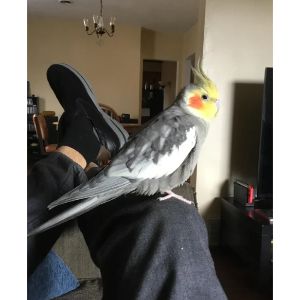
If you provide your bird with plenty of mental stimulation and happiness, it will be much easier for them to get into a good attitude and start dancing.
It might be good to invest in some playthings that engage your birds’ senses, specifically the following:
- Toys that are bursting with vibrant colors
- Toys that generate a good sound (like bells, since parrots are shown to enjoy them)
- Toys that can tolerate aggression from violent birds
The hanging spoon toy for parrots, which can be purchased from a reputable internet merchant, is very well-liked by the birds and the people who own them.
The name of the toy is Spoon Delight, and parrots all over the world adore the sound they make when they clatter together.
Although the spoons themselves do not stimulate dancing, the way they clink together and produce noises often does and can get your parrot in the mood to dance when you return from work or step into the room.
In addition, they are sturdy enough to withstand your bird’s most violent outbursts.
Frequently Asked Questions
Is it bad to play loud music around birds?
Birds can suffer damage from music that is too loud, much like you can. Make sure that the noise is not distressing the bird.
Do parrots understand what they are saying?
Most parrots are not going to understand what they say, but they might make associations with certain words, like names.
What is the easiest bird to train?
Parakeets are easy, low-maintenance, and very cute pets.
Why Do Birds Dance to Music?
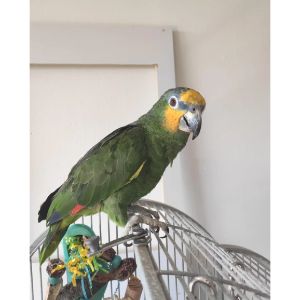
Now that you know why birds dance, you can teach your little buddy to dance with you.
It can make your random sessions so much more exciting while showing off your amazing dance partner to others.
If you find this guide, “Why Do Birds Dance to Music,” informative and helpful, you can check out these other animal-related articles from our team:
- Why Do Monkeys Have Red Bottoms?
- Why Do Dogs Like To Sleep Underneath the Bed?
- Why Does My Cat Smell My Breath?
You can learn more about bird dances by watching “25 Birds With The Best Mating Dances In The World” down below:



